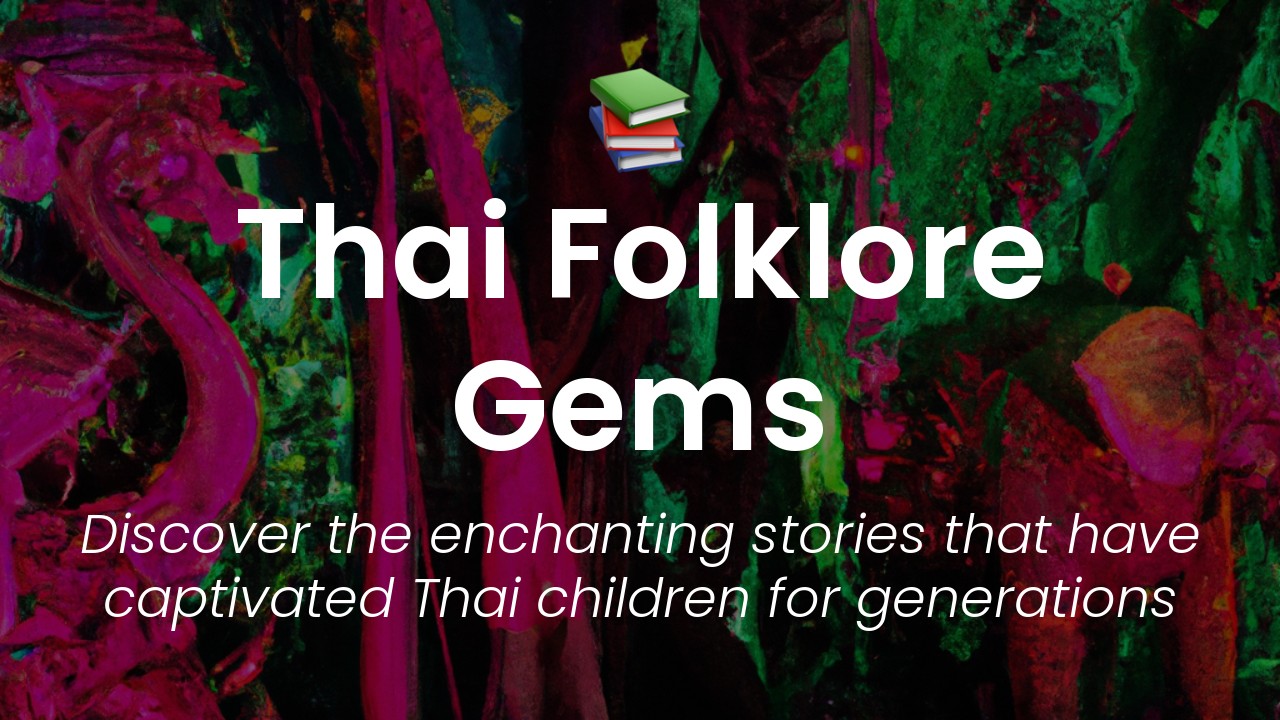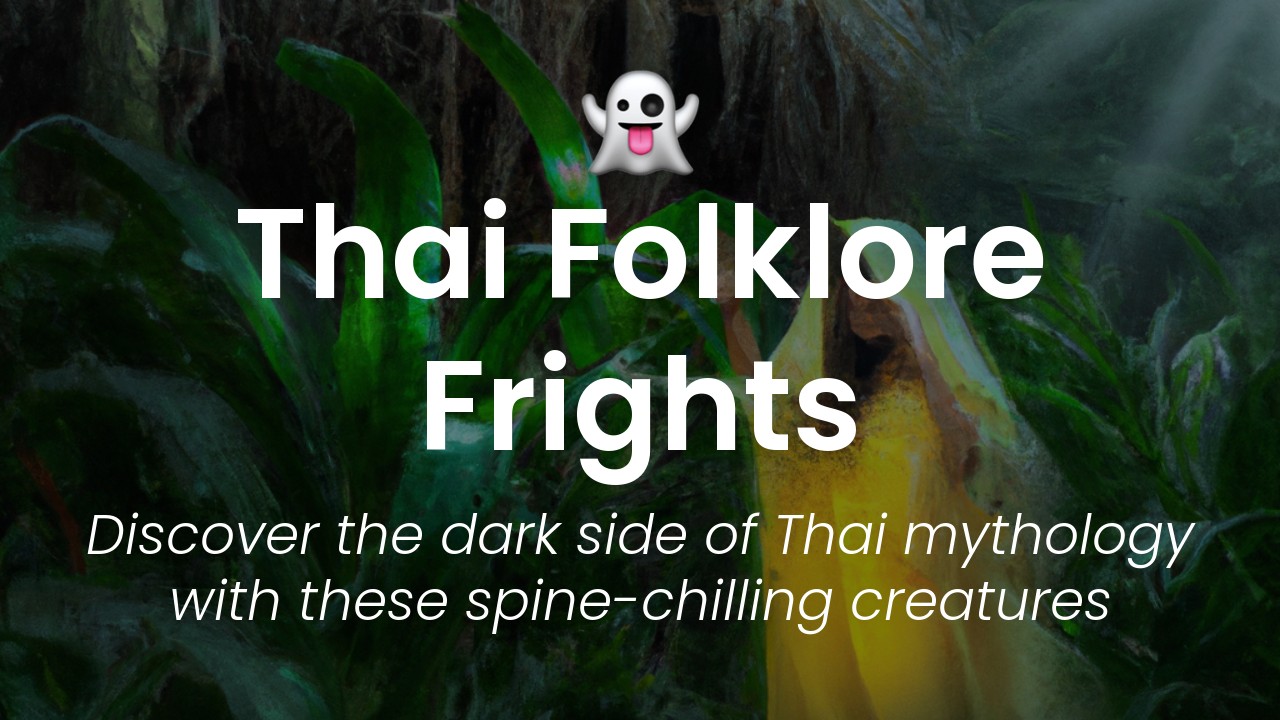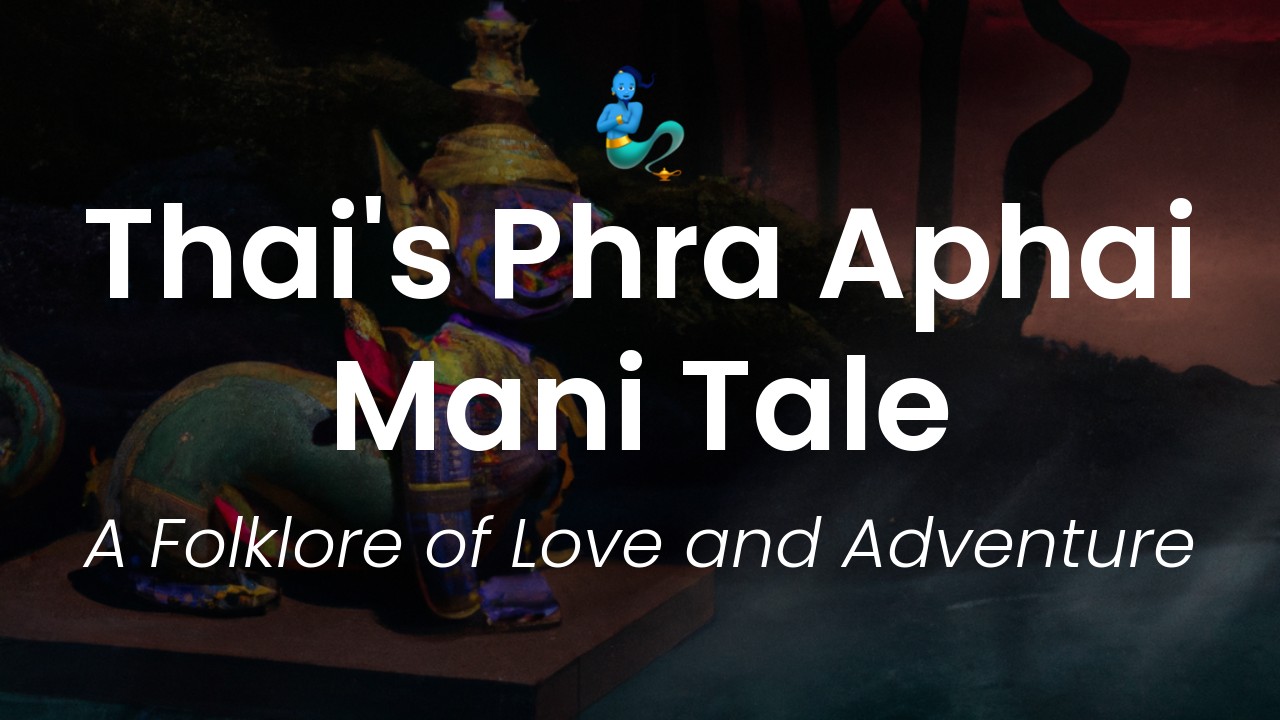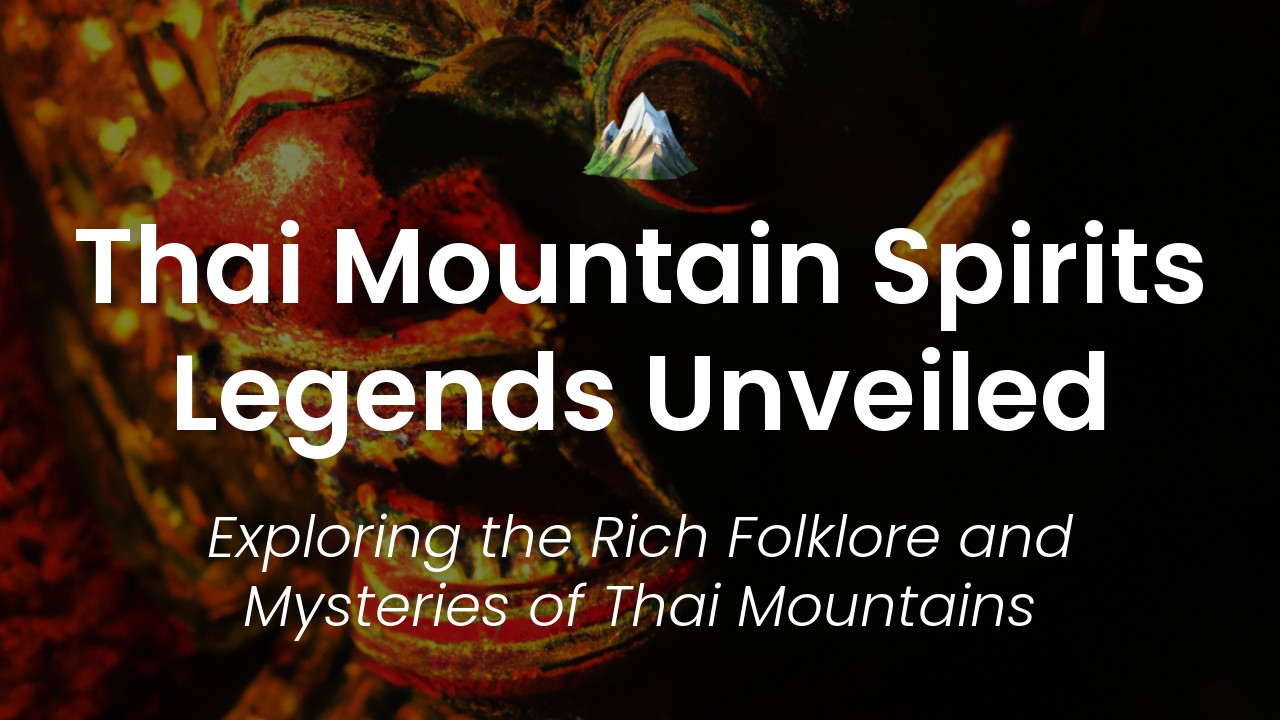As a Thai woman who is passionate about her culture, one of my favorite things to do is immerse myself in the stories of Thai folklore. Our rich and diverse cultural heritage is steeped in mythology and tales of mythical creatures, heroic ancient warriors, and wise monks. This profound cultural tradition has given birth to a rich variety of art forms, including literature, music, dance, and visual arts.
In this article, I’d like to take you on a journey through Thai art and explore the many ways that it reflects the cultural and historical context of our country. Specifically, we’ll be looking at the fascinating and sometimes eerie folkloric elements that lurk within these works of art. From traditional paintings to sculptures and architecture, our art enshrines a deep and ancient wisdom that has been passed down through the generations.
But the story doesn’t end there – what really fascinates me is seeing how much modern Thai art continues to draw from this well of imagery and symbolism. Whether through street art, mixed media, or installation pieces, Thai artists are continuing to reinterpret these ancient tales and give them new life for a contemporary world. Through their works, we can gain an insight into how these legends continue to inspire and shape Thai culture today. So come with me on a journey of discovery as we uncover the secrets, stories, and enduring legacy of Thai folklore in art.
Thai Art and Its Folklore Roots
Thailand is a land of many customs and traditions, and its rich folklore tradition is just one of the many aspects that make it an incredible place to visit and explore. The Thai people have an incredibly rich and varied folklore tradition, and it is something that is deeply rooted in their culture.
One of the most fascinating aspects of Thai folklore is how it is embedded in the art of the country. Thai art is renowned for its intricate and symbolic depictions of the natural world, mythology, and religion. In this article, we explore the role of Thai folklore in the country's art, and discover how it continues to inspire and influence artists today.
Discovering the Colors and Symbols of Folklore
There is a deep symbolism and meaning behind the colors used in Thai art that are rooted in folklore. For example, the color gold is representative of purity and is often seen in depictions of the Buddha, while the color green symbolizes growth, fertility and nature. Blue is associated with the divine, and is often used in images of gods and goddesses.
The many symbols used in Thai art also have rich mythological roots. For example, the Garuda, a mythical bird-like creature, is a common motif in Thai art, representing power and courage. The naga, a serpentine creature, is another iconic symbol often seen in Thai art and represents the unification of water and earth, and the balance between good and evil.
The Influence of Buddhism on Thai Folklore
Thailand is predominantly a Buddhist country, and the influence of Buddhism on Thai folklore is evident in the art of the country. Many of the depictions of gods and goddesses are actually representations of Buddhist teachings, with each deity representing a specific aspect of the religion.
One of the most significant figures in Thai Buddhism is the Buddha himself. He is frequently depicted in Thai art, and the mythical events surrounding his life are often emulated in the art. For example, the image of the Buddha sitting peacefully under the Bodhi tree while overcoming the devil Mara is a common motif in Thai art.
The Importance of Nature in Thai Folklore Art
Thai art is also heavily influenced by the natural world. The various flora and fauna of Thailand are depicted in often highly detailed and realistic ways, with some animals like the elephant taking on a particularly important role in Thai folklore.
In addition to these realistic depictions, Thai art often features fantastic creatures that blur the lines between myth and reality. The Kinnaree, for example, is a half-human, half-bird creature that represents feminine beauty, grace, and purity. Depictions of the Kinnaree can be found throughout Thai art, from classical murals to contemporary paintings.
Thai Folklore and its Depiction of Myths and Legends
Thai folklore is rich with myths and legends, and the art of the country reflects this through its depictions of a range of legendary figures. One of the most famous of these legends is that of the Ramakien, which is a Thai adaptation of the Indian epic, the Ramayana. The Ramakien is a classic example of how Thai folklore melds together different cultural influences into something that is uniquely Thai.
The story encompasses love, adventure, tragedy and triumph and is packed with many supernatural elements. The characters range from fantastical mythical beasts and brave warriors to gentle princesses and cunning tricksters. Depictions of the Ramakien can be found throughout Thai art, from murals in temples to modern installations in public spaces.
The Role of Thai Folklore in Contemporary Art
Thai art is a vital part of the country's culture, and it continues to inspire artists all around the world today. Contemporary Thai art often incorporates many of the same elements as classical Thai art but may also explore new themes and ideas.
Modern Thai artists are fascinated by the ways that traditional Thai art can be fused with contemporary influences. There is a growing interest in exploring the boundaries of what defines Thai art, and how it incorporates different cultures and styles.
Preserving the Rich Heritage of Thai Folklore in Art
Thai folklore is a vital part of the country's cultural identity, and it's important that it is preserved and celebrated for future generations to enjoy. The art of Thai folklore provides a window into the rich and varied mythological traditions of the country.
Artists today play a vital role in preserving and showcasing Thai folklore, both through their work and by encouraging others to learn about and appreciate the art. Modern Thai artists are passionate about sharing their culture with the world, and their work is a testament to the enduring influence of Thai folklore on contemporary art.
Conclusion
It's hard not to be captivated by the rich folklore traditions of Thailand. The stories, symbols, and motifs from centuries of cultural heritage continue to influence Thai art today. Whether through the use of traditional motifs or bold new themes, Thai art will always be an integral part of the country's identity. The mix of myth, history, and religion combine to form a uniquely Thai cultural expression, and one that will continue to inspire and enthrall art lovers for generations to come.







